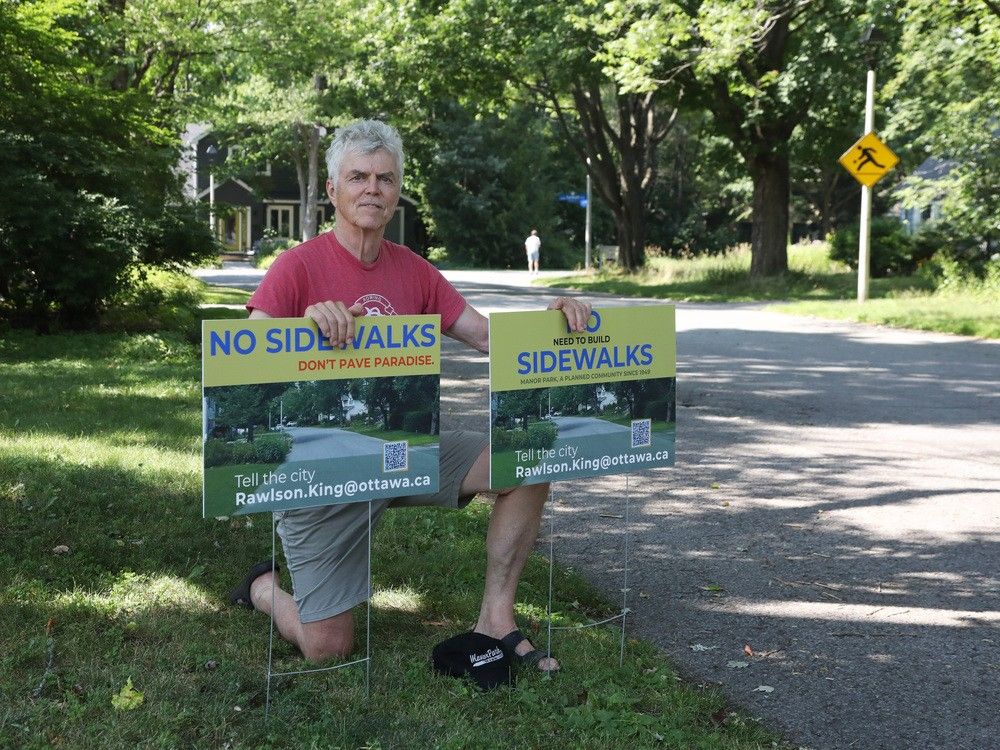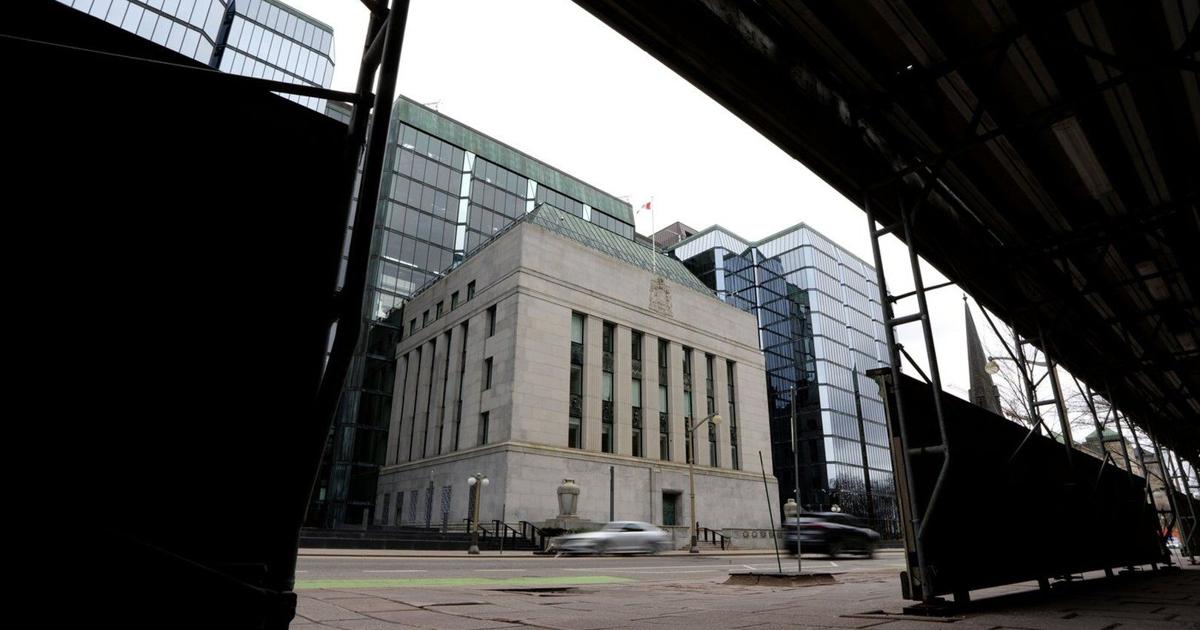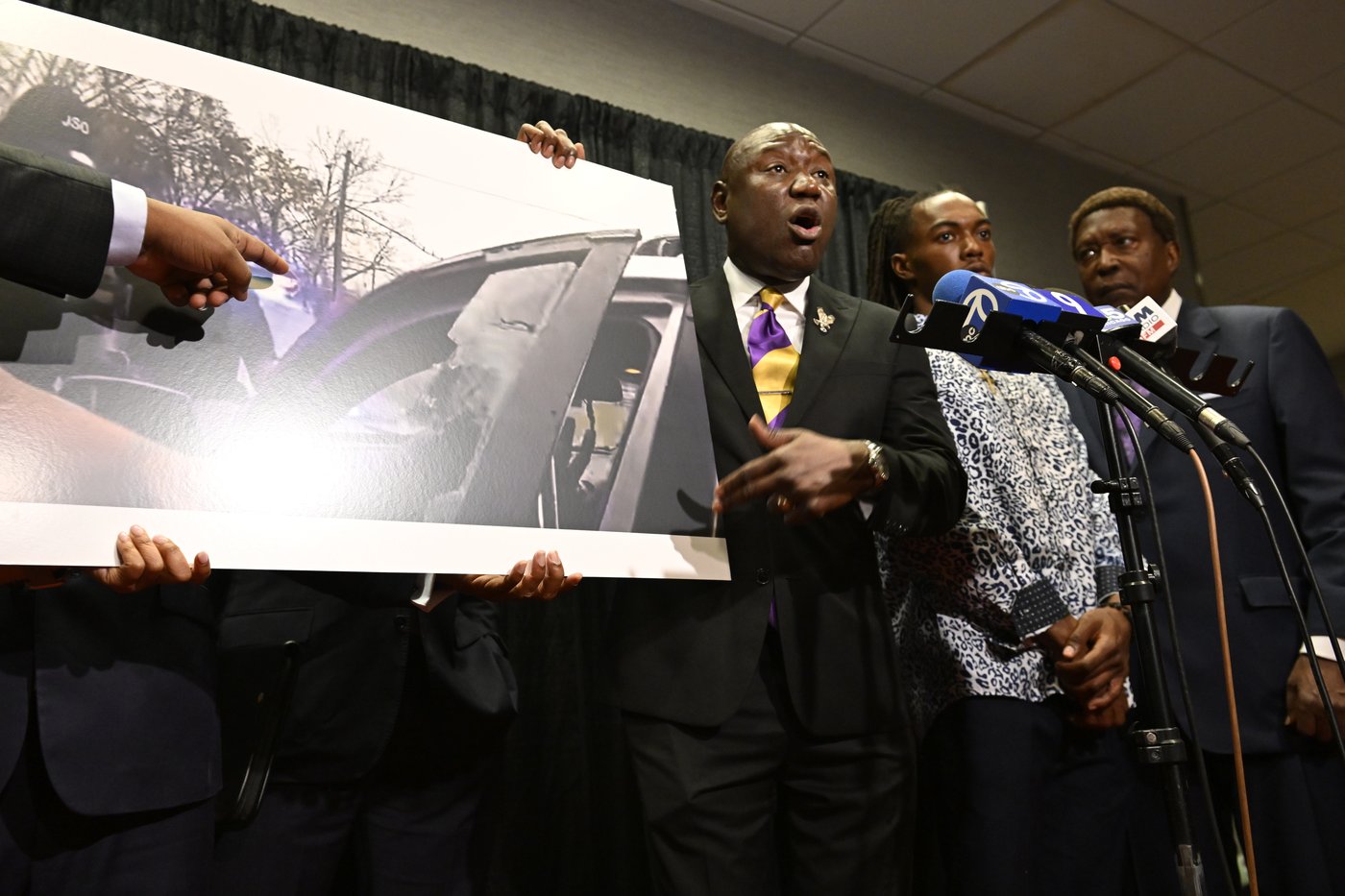Manor Park
residents regularly ask Peter Burpee for one of his “No Sidewalks” signs.
“(They’re) very supportive of the initiative. People are angry,” Burpee says of the reaction he receives while walking around the neighbourhood. “I’m the sign person.”
Burpee, who has lived in the area for more than 40 years, began making the signs after a neighbourhood group came to discuss the “sidewalk issue.” “Somebody brought up the idea of the sign and I nodded my head at the wrong time,” he says.
The City of Ottawa has undertaken an “integrated road, sewer and watermain rehabilitation” project on several Manor Park streets to replace aging sewer and water main infrastructure:
- Arundel Avenue, from Farnham Crescent to St-Laurent Boulevard;
- Braemar Street, from Ava Road to Arundel Avenue;
- Farnham Crescent, from Ava Road north to the dead end;
- Finter Street, from St-Laurent Boulevard to the dead end;
- Jeffrey Avenue, from St-Laurent Boulevard to Braemar Street;
- Kilbarry Crescent, from Sandridge Road to Ava Road.
Part of the project includes installing sidewalks on one side of those streets, which Burpee and several Manor Park residents vehemently oppose.
Burpee says Manor Park was a “planned community” to be safe, accessible and connected without sidewalks, which he says would detract from ensuring safety and “the look of the 75-year-old planned community.”
“We don’t need sidewalks. The streets are safe,” he says. “People are able to walk on both sides of the street. There’s not a lot of traffic.”
Contrary to his “No Sidewalks” signs, Burpee says he actually supports the
need for sidewalks
on busy regional roads with bus stops and high-speed traffic.
Through Ottawa’s
Transportation Master Plan
, sidewalks are prioritized in new development and road reconstruction projects and areas where “gaps exist in the pedestrian network,” according to Elizabeth Murphy, the city’s program manager of Transportation Engineering Services.
Design efforts also reflect the existing streetscape and environmental features, she adds.
The proposed design for the Manor Park construction includes sidewalks on one side of the street, which aims to “balance pedestrian safety and accessibility while preserving existing trees and neighbourhood character.”
Murphy says sidewalks are a “key infrastructure” that support transportation and promote “equitable mobility.”
She also says sidewalks support the city’s
Vision Zero
goals by separating pedestrians from vehicle traffic and enhancing safety for all travelers, especially those with mobility challenges.
“They connect people to schools, parks, transit, and local amenities, and reduce reliance on cars, encouraging healthier, more sustainable lifestyles,” Murphy wrote in a July 28 statement to the Ottawa Citizen.
Natalie Belovic, president of the Manor Park Community Association, says she’s not taking a position on the matter, but recognizes the frustration community members feel. Residents are concerned that sidewalks will dramatically change the “look and feel” of the neighbourhood and potentially impact trees and vegetation that have been in place for decades.
“The thing that people love about Manor Park is that it’s like a front-yard neighbourhood,” Belovic says. “They’re playing road hockey in the middle of the road because they can. There’s really very few cars.”
Belovic, who is also a real-estate agent, says a large majority of residents are opposed to the idea of sidewalks in low-traffic areas and feel that funding could be relocated to installing sidewalks in more high-traffic areas.
“The neighbourhood has been saying that we don’t want sidewalks because we feel that it’s perfectly safe the way it is,” she says. “We’ve been trying to get the city to install sidewalks in areas where they’re really badly needed.”
Burpee and Belovic mention Braemar Street in front of Manor Park Public School as an ideal spot where sidewalks can be built for safety reasons instead of the six streets being proposed. There are no “real sidewalks” on Braemar, they say, yet it remains the school’s main drop-off and pick-up location.
“There’s no immediate plan to fix that, except for little Band-Aids,” Belovic says.
Coun. Rawlson King, who represents Rideau-Rockcliffe ward, says that he supports the city’s Transportation Master Plan and that sidewalks are typically added for “safety, accessibility and connectivity reasons.”
While construction is focused on upgrading Manor Park’s sewer and water main systems, sidewalk installation is also being done to minimize construction disruption in the area. King notes there have been several information sessions held to address resident concerns.

“We need to ensure there is a full understanding, and it’s important because a lot of people do not understand the fact that integrated renewal projects are devised to allow for accessibility, connectivity and they are cost-efficient,” King says.
He wants to explain to residents that these integrated projects are part of the larger goals of the Transportation Master Plan in addition to other construction projects in the neighbourhood.
“We have active transportation improvements planned for Manor Park Public School, as well as the potential for a full intersection at the corner of the school at the Braemar, Eastbourne and Ava intersections, which could possibly lead to a traffic circle,” King says.
“Right now, what we are seeing is the potential for fundamental transformation in the neighbourhood and we have not had a holistic discussion.”
The next information session for neighbourhood residents with King is scheduled for Wednesday, July 30, at 6 p.m. in the main hall at 1805 Gaspé Ave.
Eugenie Waters, who chairs the MPCA’s Environmental Sustainability Committee, says a large portion of Manor Park is mostly made up of wide roads with no sidewalks, where residents walk down the middle of the road with dogs or kids play.
A parent of two elementary-age children, Waters says she frequently notices a backlog of cars, SUVs and pickup trucks during pick-up and drop-off times at the Manor Park Public School.
“They’re parked along both sides of the street, which reduces visibility,” she says. “I often see parents speeding in front of my house, after they dropped off their child, to leave the neighbourhood to get to work.”
Besides school-related traffic, Waters says drivers also accelerate too fast for a residential neighbourhood, which makes her “uncomfortable.” “When I’m with my children, I’m certainly concerned for them,” she says.
Waters says she agrees with the principles of Vision Zero to make streets safer for everyone, particularly vulnerable road users, such as those with accessibility issues, seniors and children.
“We design the environment so that people can make mistakes that they will make (driving) from time to time, but it won’t result in serious injury or death,” she says.
She also notes that the city has highlighted that protecting and preserving mature trees will be a priority and that any loss of green space will be made up by the “creation of safer streets.”
“(The policy) is fundamentally based on what we know makes streets safer for people and makes our cities more sustainable,” Waters said. “I really don’t think it’s fair that one neighbourhood gets to exclude themselves because they don’t like sidewalks.”
The issue pertains to accessibility, according to Nick Grover, an organizer with Ecology Ottawa, who says it’s about providing people a route to safely enjoy their neighbourhood.
“If it’s a very calm street, where there’s been no collisions or fatalities, great, let’s keep it that way,” Grover says.
Prioritizing pedestrian and cyclist safety is an important initiative for the city to continue focusing on, he adds.
Last week, a nine-year-old boy was
struck
by a vehicle while riding his bike in Barrhaven. An hour later, another child was struck while riding a scooter in Stittsville.
“(Sidewalks are) a physical barrier, which is above the ground, preventing a car from colliding with somebody,” Grover says. “There’s a way to avoid that through infrastructure and design.”
It’s great for residents to be passionate and concerned for their neighbourhoods, he adds, but ensuring streets are accessible for all travelers is also essential.
“It’s great to be discussing sidewalk design and pedestrian safety,” Grover says. “We find ourselves still having to make the case for sidewalks, which I thought were one of the most uncontroversial pieces of infrastructure, but here we are.”
Our website is your destination for up-to-the-minute news, so make sure to bookmark our homepage and sign up for our newsletters so we can keep you informed.
Related
- OCDSB teacher out of a job after asking students if they want to ‘play with my chalk’
- Military commander steps down as investigation into Cameron Highlanders social media posts continues



